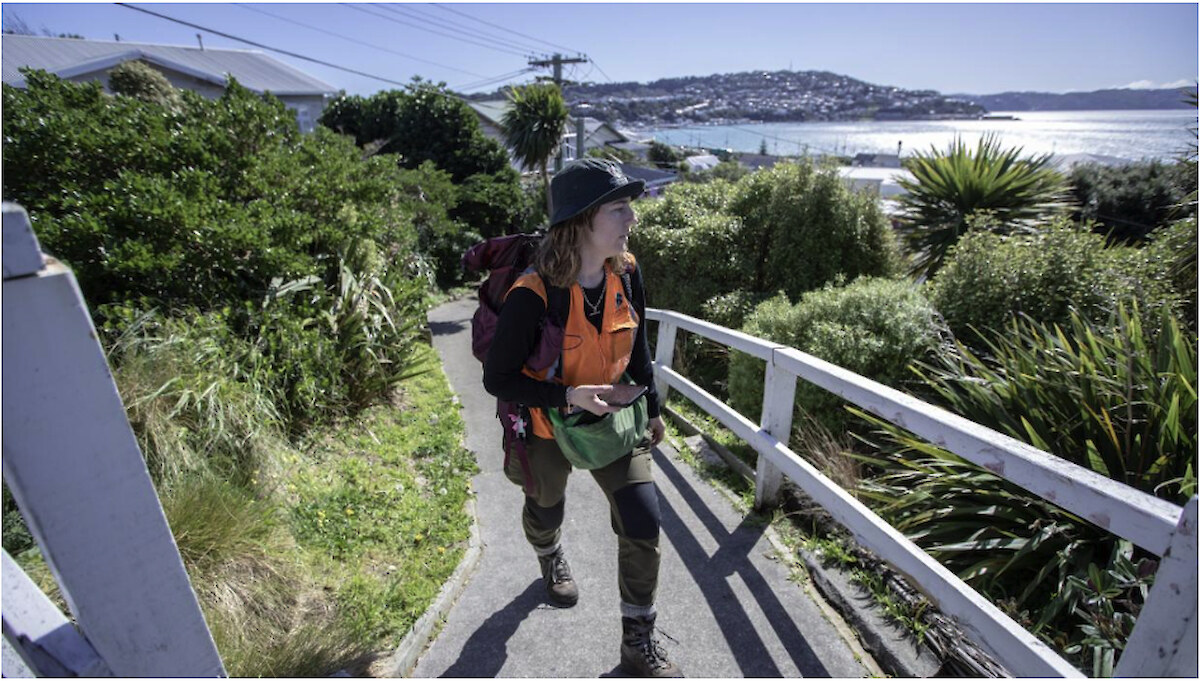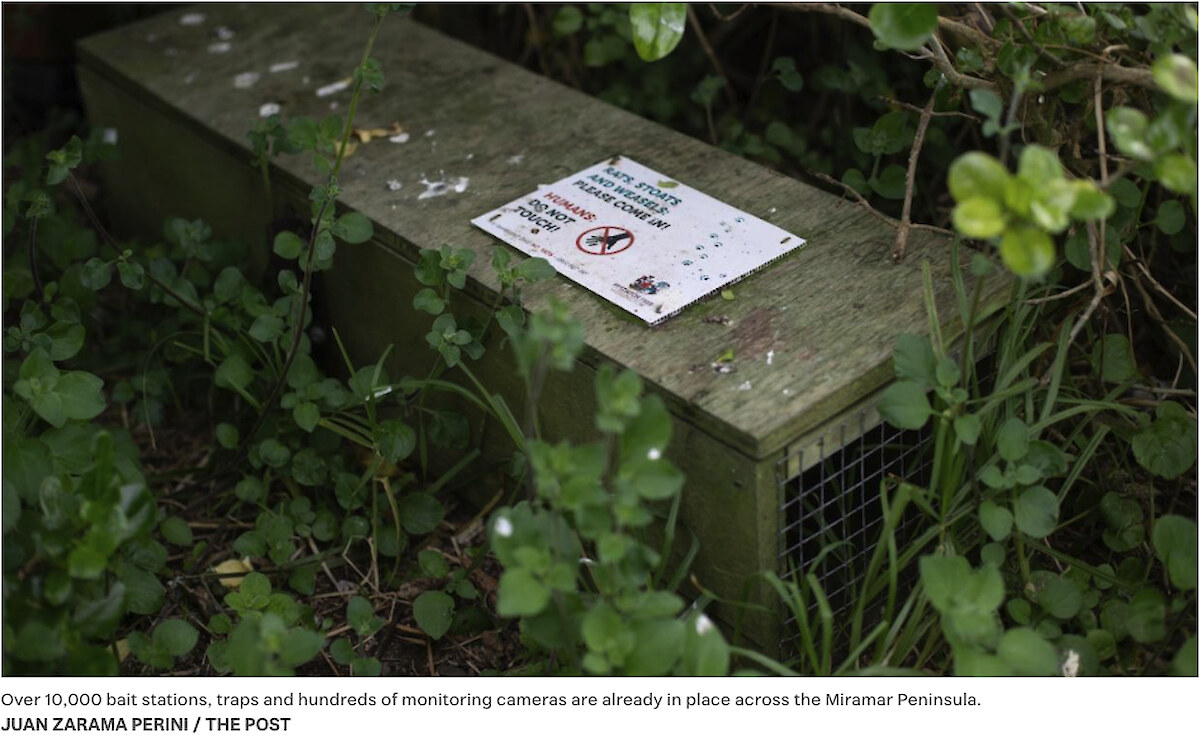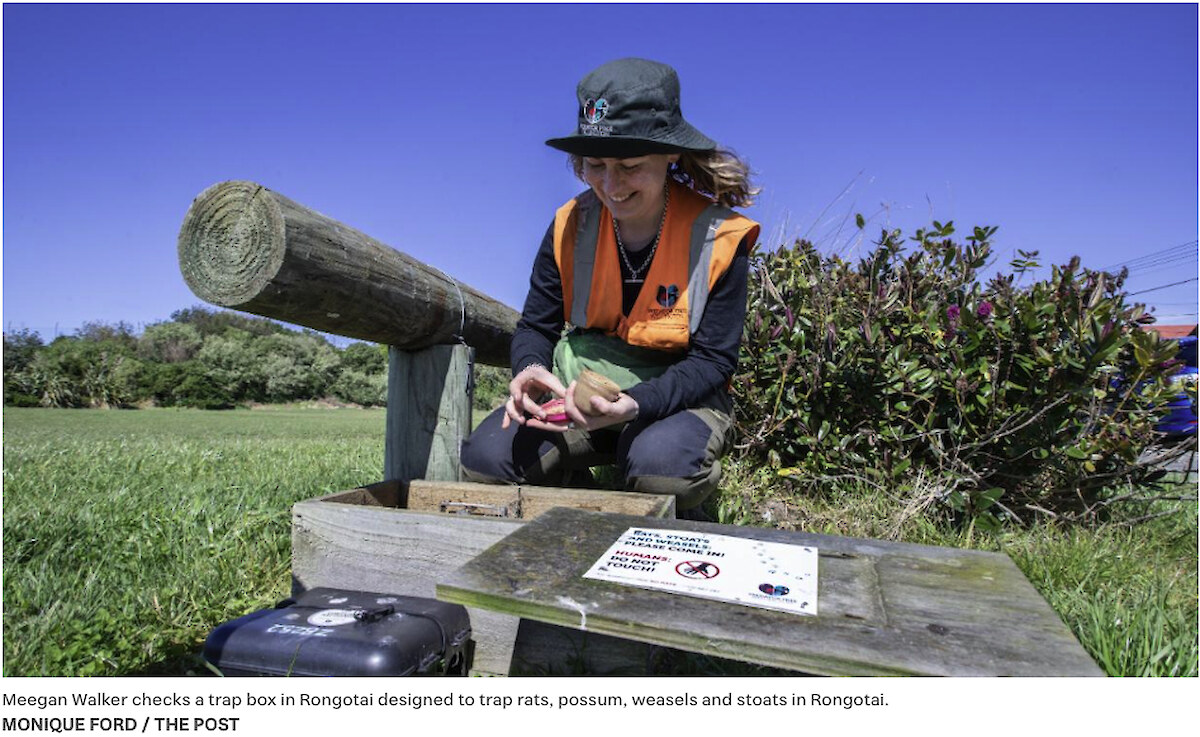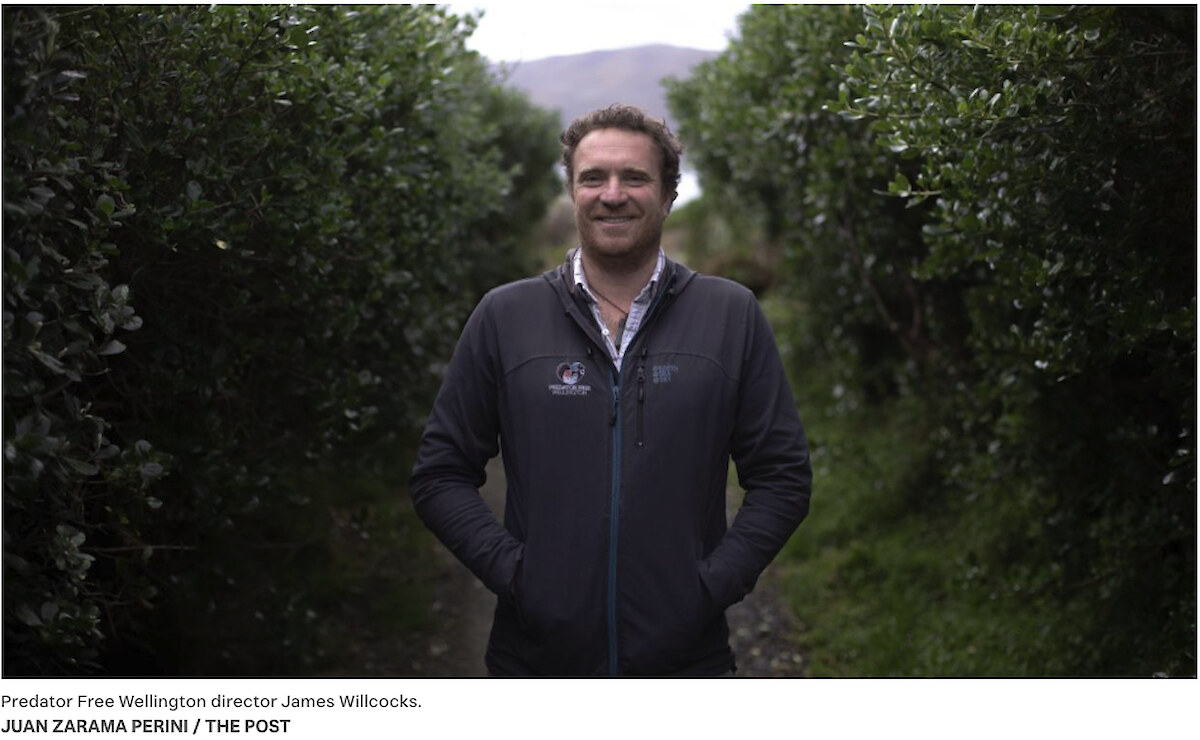Predators all but wiped out on Miramar
This article was originally written by Andrew Williams and published by The Post on September 16th 2023. See original article here.

 Wild predators posing a risk to native birdlife have been almost eradicated from the Miramar Peninsula, as work continues to turn Wellington into the world’s first predator-free capital city by 2050.
Wild predators posing a risk to native birdlife have been almost eradicated from the Miramar Peninsula, as work continues to turn Wellington into the world’s first predator-free capital city by 2050.
Standing on Bridge St in Rongotai talking to Predator Free Wellington’s Meegan Walker, the conversation pauses as a plane roars above us into the blue September sky.
“We’ve got kind of the best of both worlds. I think a lot of people at work would love being in the bush.” she says, once the engine noise drifts away over the typically windswept harbour.
Originally from Whangārei, Walker is a member of the organisation’s field operator team, and spends her days in public spaces and private properties around the capital.
Each workday she installs and maintains wooden traps and plastic bait stations, to stop the spread of rats and mustelids including stoats and weasels that endanger the city’s native wildlife population.
Over 10,000 bait stations, traps and hundreds of monitoring cameras are already in place across 980 hectares in Miramar. There are just over 70ha, an area slightly bigger than a football field, remaining for what is phase one of the project.
“When you see Miramar and the effects the project is having on the birds, geckos and wētā, it’s just so exciting.”
Bird count data shows efforts on Miramar are working — there was a 71% increase in the mean number of native birds per count between 2017 and 2022.
 Data shows a 500% increase in the mean number of fantail or pīwakawaka, a 40% increase in grey warbler or riroriro, and a 72% increase in the mean number of tūī spotted.
Data shows a 500% increase in the mean number of fantail or pīwakawaka, a 40% increase in grey warbler or riroriro, and a 72% increase in the mean number of tūī spotted.
These indicator species are used to discover how the rest of the ecosystem is fairing.
Predator Free Wellington’s report data was collected at 84 bird count stations at 400-metre intervals, manned by staff members or volunteers who count all the bird species they see during a five-minute period.
Phase two of the project aims to banish predators from the south coast and in densely populated areas, including Newtown and parts of Wellington City.
The current challenge is to stop species coming into the phase two area, which is why a 7 km buffer of bait traps has been established by volunteers running from Ōwhiro Bay to Waitangi Park.
Each day Walker hops into a Toyota Hilux and heads into the field, rain or shine.
“The sun just makes life a lot easier, but I guess then you start getting worried about getting burnt.”
Decked out in work boots and outerwear, including a Predator Free Wellington bucket hat, she rummages into an overflowing bag secured around her waist.
“This toolbag has everything. I have a piece of Lego and a golf tee from when we worked on the golf course.”
Eventually retrieving her phone, she shows me an app used to track which traps or bait stations have been newly installed or recently checked.
 “This one has been installed almost exactly four years and it has only ever had one kill,” she says about the trap we are standing next to.
“This one has been installed almost exactly four years and it has only ever had one kill,” she says about the trap we are standing next to.
Every animal killed using the traps is taken back to base for the team to dissect to understand its genetics and origins. This is more manageable now pest numbers are dwindling.
“As long as it’s not too far gone or crusty. The traps use a huge amount of force.”
After deliberating between several tools, Walker says a tub of peanut butter is her most important piece of kit — which field operators use to attract pests to traps.
The peanut butter is provided by Wellingtonian brand Fix and Fogg.
“This is a lovely blend of their Everything Butter and the maple one, so it smells really nice.”
Would she be tempted to eat some for lunch? No, she says, preferring a cafe, the beach, or heading back to the ute for a sit-down.
Used in the large wooden trap boxes, the peanut butter is also spread on chew cards made from the same material as real estate and political signs. Chew marks indicate which animal is responsible for taking the food.
Like any job, there are ups and downs. But Walker says her manager, James Willcocks, appears with a boost whenever she’s feeling a little uninspired. “Everything he says sounds so inspirational.”
When I spoke to Willcocks over the phone a week earlier, he said his team is “trained like ninjas” — whether watching camera footage to view monitoring intelligence, or they’re on the ground looking for evidence of predators or any potential holes in the network.
 If anything is detected, the group’s employees and a team of 20,000 residents and volunteers act quickly to stamp out threats.
If anything is detected, the group’s employees and a team of 20,000 residents and volunteers act quickly to stamp out threats.
“I think we’ve successfully eliminated Norway rats, weasels and stoats in Miramar. We use the term ‘eliminate’ because we can find we have no reason to believe they are present at all.”
While riroriro numbers have been stable across the city since 2011, a Predator Free Wellington report says the increase in Miramar is solely a result of local predator eradication efforts.
“The year before last, our team looked at and analysed 390,000 individual images on camera,” he said, using hundreds of cameras located at 1 per hectare across the peninsula.
A “high-density” number of traps are already in place in Rongotai, Kibirnie and Lyall Bay, in an area Willcocks says poses its own problems due to infrastructure including Wellington Hospital, Wellington Zoo and Government House.
The group has received around 10,000 individual permissions across both project phrases to install bait traps and cameras in private property, including households and businesses.
“That took a long, long time.”
Once phase five and the project is complete, around 30,000ha and an estimated 70,000 households will encompass the predator-free area stretching across Wellington, from Miramar to the border with Porirua City.
Willcocks says the successes so far are down to a “patchwork quilt” of organisations all chipping in — Predator Free Wellington, Wellington City Council, Capital Kiwi and other conservation groups.
“There are thousands of Wellingtonians working on this ecological restoration space. We’re sharing intel, we’re sharing and planning and all that sort of stuff.”
Funding is an ongoing concern, especially in an election year, although the project has received $7.6 million through Jobs for Nature funding. Willcocks said the public backed the project.
“It continues to increase in terms of support which is around 95% support, which is amazing.”
There are no native birds categorised as at risk in the capital any more, according to a recent survey released by Wellington City Council, which also highlighted higher bird numbers in Miramar.
“We’re really excited about that because that really kind of gives us a picture of what’s going to happen with the rest of Wellington when it goes predator-free,” says council biosecurity specialist Henk Louw.
The council data uses fewer bird count stations but shows that in 2021, tītipounamu (rifleman) were spotted in the wild in Wellington for the first time in over 100 years, and were found nesting outside of Zealandia’s perimeter fence for the first time.
According to the council, average annual counts of kākā also increased by 260% and kererū by 200%.
Louw says it’s more challenging to monitor nocturnal birds such as morepork/ruru, partly because their calls travel long distances, but the council is looking at ways to track their numbers.
The public can alert Predator Free Wellington to threats by calling 0800 667 287.

Our Anchor Donors
• Denise Church & Michael Veneer • Tim Clarke & Tessa O’Rorke • Cathy Ferguson & Mike Durer • Heather & John Hutton • Shirley Vollweiler & Len Cook • Kathryn Jones & David Long
Posted: 20 September 2023
